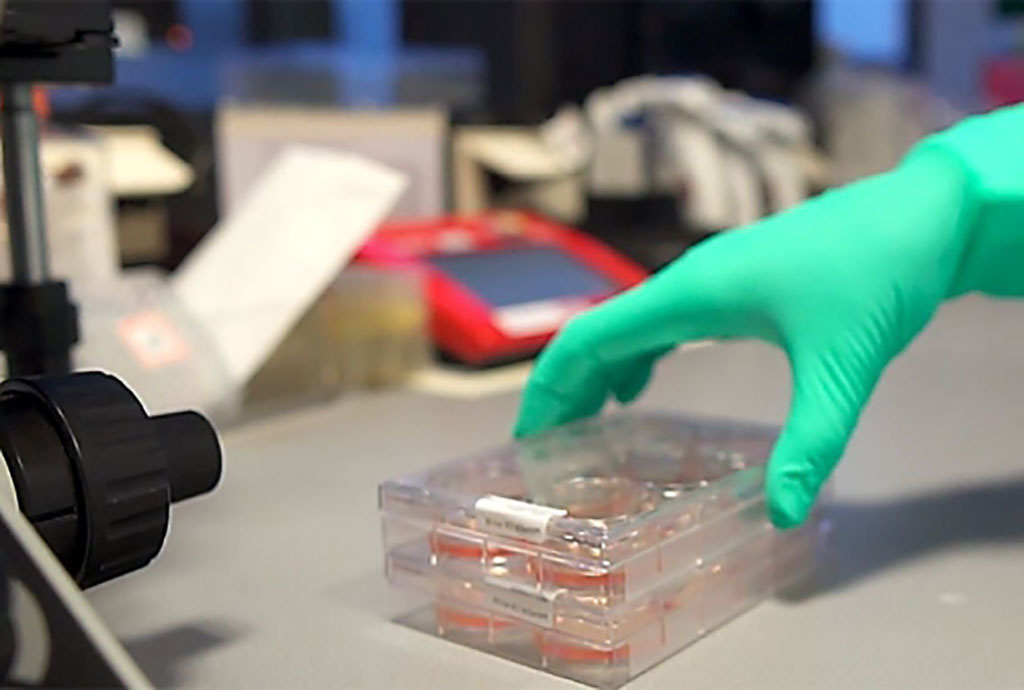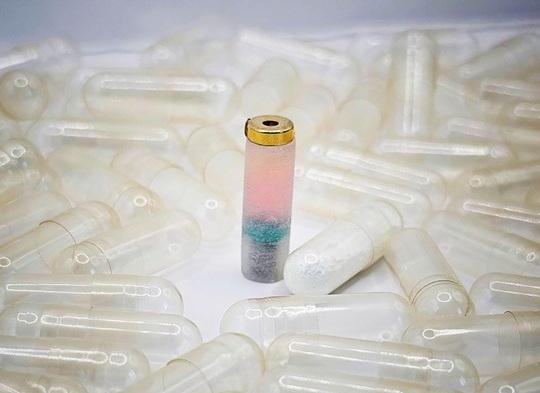Johnson & Johnson Announces Lead Vaccine Candidate for COVID-19
|
By HospiMedica International staff writers Posted on 31 Mar 2020 |

Image: Johnson & Johnson announces lead vaccine candidate for COVID-19 (Photo courtesy of Johnson & Johnson)
Johnson & Johnson (New Brunswick, NJ, USA) has announced the selection of a lead COVID-19 vaccine candidate from constructs it has been working on since January 2020, along with significant expansion of its existing partnership between the company’s Janssen Pharmaceutical Companies (Beerse, Belgium) and the Biomedical Advanced Research and Development Authority (BARDA), as well as rapid scaling of its manufacturing capacity with the goal of providing global supply of more than one billion doses of a vaccine. The company expects to initiate human clinical studies of its lead vaccine candidate at the latest by September 2020 and anticipates the first batches of a COVID-19 vaccine could be available for emergency use authorization in early 2021.
Johnson & Johnson began its efforts to research potential vaccine candidates in January 2020, as soon as the novel coronavirus (COVID-19) sequence became available. Research teams at Janssen, in collaboration with Beth Israel Deaconess Medical Center, part of Harvard Medical School, constructed and tested multiple vaccine candidates using the Janssen AdVac technology. Through collaborations with scientists at multiple academic institutions, the vaccine constructs were then tested to identify those with the most promise in producing an immune response in preclinical testing. Based on this work, Johnson & Johnson has identified a lead COVID-19 vaccine candidate (with two back-ups), which will progress into the first manufacturing steps. Under an accelerated timeline, the company aims to initiate a Phase 1 clinical study in September 2020, with clinical data on safety and efficacy expected to be available by the end of the year, enabling vaccine availability for emergency use in early 2021.
BARDA, which is part of the Office of the Assistant Secretary for Preparedness and Response (ASPR) at the US Department of Health and Human Services, and Johnson & Johnson have together committed more than USD 1 billion of investment to co-fund vaccine research, development, and clinical testing. Johnson & Johnson will use its validated vaccine platform and is allocating resources, including personnel and infrastructure globally, as needed, to focus on these efforts. Separately, BARDA and the company have provided additional funding that will enable expansion of their ongoing work to identify potential antiviral treatments against the novel coronavirus.
As part of its commitment, Johnson & Johnson is also expanding the company’s global manufacturing capacity, including through the establishment of new US vaccine manufacturing capabilities and scaling up capacity in other countries. The additional capacity will assist in the rapid production of a vaccine and enable the supply of more than one billion doses of a safe and effective vaccine globally. The company plans to begin production at risk imminently and is committed to bringing an affordable vaccine to the public on a not-for-profit basis for emergency pandemic use.
“The world is facing an urgent public health crisis and we are committed to doing our part to make a COVID-19 vaccine available and affordable globally as quickly as possible. As the world’s largest healthcare company, we feel a deep responsibility to improve the health of people around the world every day. Johnson & Johnson is well-positioned through our combination of scientific expertise, operational scale and financial strength to bring our resources in collaboration with others to accelerate the fight against this pandemic,” said Alex Gorsky, Chairman and Chief Executive Officer, Johnson & Johnson.
“We greatly value the US government’s confidence and support for our R&D efforts. Johnson & Johnson’s global team of experts has ramped up our research and development processes to unprecedented levels, and our teams are working tirelessly alongside BARDA, scientific partners, and global health authorities,” said Paul Stoffels, M.D., Vice Chairman of the Executive Committee and Chief Scientific Officer, Johnson & Johnson. “We are very pleased to have identified a lead vaccine candidate from the constructs we have been working on since January. We are moving on an accelerated timeline toward Phase 1 human clinical trials at the latest by September 2020 and, supported by the global production capability that we are scaling up in parallel to this testing, we expect a vaccine could be ready for emergency use in early 2021.”
Related Links:
Johnson & Johnson
Janssen Pharmaceutical Companies
Johnson & Johnson began its efforts to research potential vaccine candidates in January 2020, as soon as the novel coronavirus (COVID-19) sequence became available. Research teams at Janssen, in collaboration with Beth Israel Deaconess Medical Center, part of Harvard Medical School, constructed and tested multiple vaccine candidates using the Janssen AdVac technology. Through collaborations with scientists at multiple academic institutions, the vaccine constructs were then tested to identify those with the most promise in producing an immune response in preclinical testing. Based on this work, Johnson & Johnson has identified a lead COVID-19 vaccine candidate (with two back-ups), which will progress into the first manufacturing steps. Under an accelerated timeline, the company aims to initiate a Phase 1 clinical study in September 2020, with clinical data on safety and efficacy expected to be available by the end of the year, enabling vaccine availability for emergency use in early 2021.
BARDA, which is part of the Office of the Assistant Secretary for Preparedness and Response (ASPR) at the US Department of Health and Human Services, and Johnson & Johnson have together committed more than USD 1 billion of investment to co-fund vaccine research, development, and clinical testing. Johnson & Johnson will use its validated vaccine platform and is allocating resources, including personnel and infrastructure globally, as needed, to focus on these efforts. Separately, BARDA and the company have provided additional funding that will enable expansion of their ongoing work to identify potential antiviral treatments against the novel coronavirus.
As part of its commitment, Johnson & Johnson is also expanding the company’s global manufacturing capacity, including through the establishment of new US vaccine manufacturing capabilities and scaling up capacity in other countries. The additional capacity will assist in the rapid production of a vaccine and enable the supply of more than one billion doses of a safe and effective vaccine globally. The company plans to begin production at risk imminently and is committed to bringing an affordable vaccine to the public on a not-for-profit basis for emergency pandemic use.
“The world is facing an urgent public health crisis and we are committed to doing our part to make a COVID-19 vaccine available and affordable globally as quickly as possible. As the world’s largest healthcare company, we feel a deep responsibility to improve the health of people around the world every day. Johnson & Johnson is well-positioned through our combination of scientific expertise, operational scale and financial strength to bring our resources in collaboration with others to accelerate the fight against this pandemic,” said Alex Gorsky, Chairman and Chief Executive Officer, Johnson & Johnson.
“We greatly value the US government’s confidence and support for our R&D efforts. Johnson & Johnson’s global team of experts has ramped up our research and development processes to unprecedented levels, and our teams are working tirelessly alongside BARDA, scientific partners, and global health authorities,” said Paul Stoffels, M.D., Vice Chairman of the Executive Committee and Chief Scientific Officer, Johnson & Johnson. “We are very pleased to have identified a lead vaccine candidate from the constructs we have been working on since January. We are moving on an accelerated timeline toward Phase 1 human clinical trials at the latest by September 2020 and, supported by the global production capability that we are scaling up in parallel to this testing, we expect a vaccine could be ready for emergency use in early 2021.”
Related Links:
Johnson & Johnson
Janssen Pharmaceutical Companies
Latest COVID-19 News
- Low-Cost System Detects SARS-CoV-2 Virus in Hospital Air Using High-Tech Bubbles
- World's First Inhalable COVID-19 Vaccine Approved in China
- COVID-19 Vaccine Patch Fights SARS-CoV-2 Variants Better than Needles
- Blood Viscosity Testing Can Predict Risk of Death in Hospitalized COVID-19 Patients
- ‘Covid Computer’ Uses AI to Detect COVID-19 from Chest CT Scans
- MRI Lung-Imaging Technique Shows Cause of Long-COVID Symptoms
- Chest CT Scans of COVID-19 Patients Could Help Distinguish Between SARS-CoV-2 Variants
- Specialized MRI Detects Lung Abnormalities in Non-Hospitalized Long COVID Patients
- AI Algorithm Identifies Hospitalized Patients at Highest Risk of Dying From COVID-19
- Sweat Sensor Detects Key Biomarkers That Provide Early Warning of COVID-19 and Flu
- Study Assesses Impact of COVID-19 on Ventilation/Perfusion Scintigraphy
- CT Imaging Study Finds Vaccination Reduces Risk of COVID-19 Associated Pulmonary Embolism
- Third Day in Hospital a ‘Tipping Point’ in Severity of COVID-19 Pneumonia
- Longer Interval Between COVID-19 Vaccines Generates Up to Nine Times as Many Antibodies
- AI Model for Monitoring COVID-19 Predicts Mortality Within First 30 Days of Admission
- AI Predicts COVID Prognosis at Near-Expert Level Based Off CT Scans
Channels
Critical Care
view channel
AI Heart Attack Risk Assessment Tool Outperforms Existing Methods
For decades, doctors have relied on standardized scoring systems to assess patients with the most common type of heart attack—non-ST-elevation acute coronary syndrome (NSTE-ACS). The GRACE score, used... Read more
'Universal' Kidney to Match Any Blood Type
Blood-type incompatibility has long been one of the greatest obstacles in organ transplantation, forcing thousands of patients—particularly those with type O blood—to wait years longer for compatible donors.... Read moreSurgical Techniques
view channel
Minimally Invasive Endoscopic Surgery Improves Severe Stroke Outcomes
Intracerebral hemorrhage, a type of stroke caused by bleeding deep within the brain, remains one of the most challenging neurological emergencies to treat. Accounting for about 15% of all strokes, it carries... Read more
Novel Glue Prevents Complications After Breast Cancer Surgery
Seroma and prolonged lymphorrhea are among the most common complications following axillary lymphadenectomy in breast cancer patients. These postoperative issues can delay recovery and postpone the start... Read morePatient Care
view channel
Revolutionary Automatic IV-Line Flushing Device to Enhance Infusion Care
More than 80% of in-hospital patients receive intravenous (IV) therapy. Every dose of IV medicine delivered in a small volume (<250 mL) infusion bag should be followed by subsequent flushing to ensure... Read more
VR Training Tool Combats Contamination of Portable Medical Equipment
Healthcare-associated infections (HAIs) impact one in every 31 patients, cause nearly 100,000 deaths each year, and cost USD 28.4 billion in direct medical expenses. Notably, up to 75% of these infections... Read more
Portable Biosensor Platform to Reduce Hospital-Acquired Infections
Approximately 4 million patients in the European Union acquire healthcare-associated infections (HAIs) or nosocomial infections each year, with around 37,000 deaths directly resulting from these infections,... Read moreFirst-Of-Its-Kind Portable Germicidal Light Technology Disinfects High-Touch Clinical Surfaces in Seconds
Reducing healthcare-acquired infections (HAIs) remains a pressing issue within global healthcare systems. In the United States alone, 1.7 million patients contract HAIs annually, leading to approximately... Read moreHealth IT
view channel
Printable Molecule-Selective Nanoparticles Enable Mass Production of Wearable Biosensors
The future of medicine is likely to focus on the personalization of healthcare—understanding exactly what an individual requires and delivering the appropriate combination of nutrients, metabolites, and... Read moreBusiness
view channel
Philips and Masimo Partner to Advance Patient Monitoring Measurement Technologies
Royal Philips (Amsterdam, Netherlands) and Masimo (Irvine, California, USA) have renewed their multi-year strategic collaboration, combining Philips’ expertise in patient monitoring with Masimo’s noninvasive... Read more
B. Braun Acquires Digital Microsurgery Company True Digital Surgery
The high-end microsurgery market in neurosurgery, spine, and ENT is undergoing a significant transformation. Traditional analog microscopes are giving way to digital exoscopes, which provide improved visualization,... Read more
CMEF 2025 to Promote Holistic and High-Quality Development of Medical and Health Industry
The 92nd China International Medical Equipment Fair (CMEF 2025) Autumn Exhibition is scheduled to be held from September 26 to 29 at the China Import and Export Fair Complex (Canton Fair Complex) in Guangzhou.... Read more

















